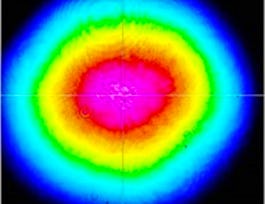This course will cover various aspects of microelectronics and nanoelectronics. This field aims to advance and improve the functionality of electronic devices by scaling transistors to smaller feature sizes. The course will introduce you to essential concepts such as length scales, transistor actions, and feature sizes of integrated circuits. The course will also look at historical observations and trends using Moore’s Law, which currently guides and predict development of the Semiconductor industry. Most importantly, our goal is to highlight why packaging is so important and relevant today. Furthermore, we will also explore the anatomy and function of a semiconductor package, starting with substrate-level package interconnection to the motherboard. We will also describe features as we differentiate various types of packages and how they differ in materials, design, and reliability.



Introduction to Semiconductor Packaging
Ce cours fait partie de Spécialisation Semiconductor Packaging

Instructeur : Terry Alford
3 945 déjà inscrits
Inclus avec 
(103 avis)
Ce que vous apprendrez
Introduction to essential concepts such as length scales, transistor actions and feature sizes of integrated circuits.
Historical observations and trends using Moores Law
Explore the anatomy and function of semiconductor packaging.
Recognize various types of packages and how they differ in materials, design and reliability.
Compétences que vous acquerrez
- Catégorie : Materials-device characterization and analysis
- Catégorie : thermal management
- Catégorie : Semiconductor packaging design
- Catégorie : Materials-device length scales
Détails à connaître

Ajouter à votre profil LinkedIn
8 devoirs
Découvrez comment les employés des entreprises prestigieuses maîtrisent des compétences recherchées

Élaborez votre expertise du sujet
- Apprenez de nouveaux concepts auprès d'experts du secteur
- Acquérez une compréhension de base d'un sujet ou d'un outil
- Développez des compétences professionnelles avec des projets pratiques
- Obtenez un certificat professionnel partageable


Obtenez un certificat professionnel
Ajoutez cette qualification à votre profil LinkedIn ou à votre CV
Partagez-le sur les réseaux sociaux et dans votre évaluation de performance

Il y a 9 modules dans ce cours
Welcome to Introduction to Semiconductor Packaging. In this course, Dr. Terry Alford and Dr. Mitul Modi will share various aspects of microelectronics and nanoelectronics. This field aims to advance and improve the functionality of electronic devices by scaling transistors to smaller feature sizes. Our aim is to introduce you to essential concepts such as length scales, transistor actions, and feature sizes of integrated circuits. We also look at historical observations and trends using Moore’s Law, which currently guides and predict development of the Semiconductor industry. Most importantly, our goal is to highlight why packaging is so important and relevant today. Furthermore, we will also explore the anatomy and function of a semiconductor package, starting with substrate-level package interconnection to the motherboard. We will also describe features as we differentiate various types of packages and how they differ in materials, design, and reliability.
Inclus
1 vidéo2 lectures
In this module, ASU Professor Terry Alford and Intel's Dr. Mitul Modi discuss nanoelectronics, a field that aims to advance and improve the functionality of electronic devices by scaling transistors to smaller feature sizes. Professor Alford and Dr. Mitul Modi will lead you through length scales, transistor actions, the great transistor, feature sizes, integrated circuits, Moore’s Law, and new markets. You will also learn about the new challenges for semiconductor packing that arise from nanoscale fabrication.
Inclus
1 vidéo3 lectures1 devoir2 plugins
In this module, Dr. Mitul Modi discusses the challenges and opportunities in semiconductor packaging. He will explain why we package semiconductor die, describe the silicon to semiconductor package process flow, and how packaging is evolving to meet new market demands. He will also introduce the concept of heterogeneous integration, which enables higher functionality by combining different types of devices in a single package. You will learn how semiconductor packaging connects the silicon circuitry to the rest of the system, manages the power and signals, protects the silicon circuitry, enables cooling of the circuitry, and enables spanning many length scales.
Inclus
1 vidéo2 lectures1 devoir
In this module, you will learn about Semiconductor Packaging; the past, present, and future. Dr. Mitul Modi will explain the significance of Moore's Law, lead you through a condensed history of semiconductor packaging, and help you to identify the importance of packaging in the future, as well as why heterogeneous integration is important to the semiconductor industry.
Inclus
1 vidéo2 lectures1 devoir
In this module, Dr. Mitul Modi discusses the components and types of semiconductor packages. He will explain how the IC chip and the package substrate are connected by the flip chip interconnect (FLI) and how the package is connected to the motherboard by the second level interconnect (SLI). He will also describe other features that are added to some packages depending on the design, performance, and usage requirements. Finally, he will compare different types of packages and how they differ in materials, design, and reliability.
Inclus
1 vidéo2 lectures1 devoir
In this module, you will learn the structure and function of the package substrate in semiconductor packaging. Dr. Mitul Modi will describe the important features in the package substrate and discuss how the package substrate is designed for cost and performance trade-offs.
Inclus
1 vidéo2 lectures1 devoir
In this module, Dr. Mitul Modi discusses the mechanical, thermal, and electrical functions of semiconductor packaging. He will talk about how the package is used to manage environmental stresses, IC heat, power, and signals and will show how packaging involves different engineering skills and knowledge.
Inclus
1 vidéo2 lectures1 devoir
In this module, Dr. Mitul Modi discusses the reliability and customer ease of use. He will explain how the customer use of a package and the market use conditions affect the reliability needs and the materials/design choices for the package. You will also learn the importance of a common package footprint and second level interconnect (SLI) for motherboard design.
Inclus
1 vidéo2 lectures1 devoir
In conclusion of Introduction to Semiconductor Packaging, we would like to summarize the main takeaways. We started by sharing various aspects of nanoelectronics, transistor action, reliability, and customer ease of use. Then, we explored how Moore’s Law and market use conditions affect the packages' reliability needs and the materials/design choices. At the end, we saw how the common footprint of a motherboard or socket determines a package's substrate level interconnect. Thank you for joining us.
Inclus
1 vidéo1 devoir
Instructeur

Offert par
Recommandé si vous êtes intéressé(e) par Electrical Engineering

Arizona State University

University of California, Davis

University of Colorado Boulder
Pour quelles raisons les étudiants sur Coursera nous choisissent-ils pour leur carrière ?




Avis des étudiants
103 avis
- 5 stars
73,78 %
- 4 stars
20,38 %
- 3 stars
2,91 %
- 2 stars
0,97 %
- 1 star
1,94 %
Affichage de 3 sur 103
Révisé le 3 juil. 2024
Excellent course, and I can't thank enough. The quiz are frustrating, they are not aligned with the material taught.
Révisé le 14 oct. 2023
Thank you for the opportunity, I work in the field already. Its better insite.
Révisé le 6 août 2024
my experience is very good. as I learn what is packaging and how semiconductor packaging is important. instructor is really good, and assignments are very helpful to understand the theory part.

Ouvrez de nouvelles portes avec Coursera Plus
Accès illimité à 10,000+ cours de niveau international, projets pratiques et programmes de certification prêts à l'emploi - tous inclus dans votre abonnement.
Faites progresser votre carrière avec un diplôme en ligne
Obtenez un diplôme auprès d’universités de renommée mondiale - 100 % en ligne
Rejoignez plus de 3 400 entreprises mondiales qui ont choisi Coursera pour les affaires
Améliorez les compétences de vos employés pour exceller dans l’économie numérique
Foire Aux Questions
Access to lectures and assignments depends on your type of enrollment. If you take a course in audit mode, you will be able to see most course materials for free. To access graded assignments and to earn a Certificate, you will need to purchase the Certificate experience, during or after your audit. If you don't see the audit option:
The course may not offer an audit option. You can try a Free Trial instead, or apply for Financial Aid.
The course may offer 'Full Course, No Certificate' instead. This option lets you see all course materials, submit required assessments, and get a final grade. This also means that you will not be able to purchase a Certificate experience.
When you enroll in the course, you get access to all of the courses in the Specialization, and you earn a certificate when you complete the work. Your electronic Certificate will be added to your Accomplishments page - from there, you can print your Certificate or add it to your LinkedIn profile. If you only want to read and view the course content, you can audit the course for free.
If you subscribed, you get a 7-day free trial during which you can cancel at no penalty. After that, we don’t give refunds, but you can cancel your subscription at any time. See our full refund policy.


